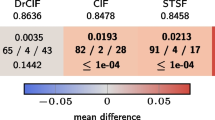Abstract
The International Real-time Magnetic Observatory Network (INTERMAGNET) is the world’s biggest international network of ground-based observatories, providing geomagnetic data almost in real time (within 72 hours of collection) [Kerridge, 2001]. The observation data are rapidly transferred by the observatories participating in the program to regional Geomagnetic Information Nodes (GINs), which carry out a global exchange of data and process the results. The observations of the main (core) magnetic field of the Earth and its study are one of the key problems of geophysics. The INTERMAGNET system is the basis of monitoring the state of the Earth’s magnetic field; therefore, the information provided by the system is required to be very reliable. Despite the rigid high-quality standard of the recording devices, they are subject to external effects that affect the quality of the records. Therefore, an objective and formalized recognition with the subsequent remedy of the anomalies (artifacts) that occur on the records is an important task. Expanding on the ideas of Agayan [Agayan et al., 2005] and Gvishiani [Gvishiani et al., 2008a; 2008b], this paper suggests a new algorithm of automatic recognition of anomalies with specified morphology, capable of identifying both physically- and anthropogenically-derived spikes on the magnetograms. The algorithm is constructed using fuzzy logic and, as such, is highly adaptive and universal. The developed algorithmic system formalizes the work of the expert-interpreter in terms of artificial intelligence. This ensures identical processing of large data arrays, almost unattainable manually. Besides the algorithm, the paper also reports on the application of the developed algorithmic system for identifying spikes at the INTERMAGNET observatories. The main achievement of the work is the creation of an algorithm permitting the almost unmanned extraction of spike-free (definitive) magnetograms from preliminary records. This automated system is developed for the first time with the application of fuzzy logic system for geomagnetic measurements. It is important to note that the recognition of time disturbances is formalized and identical. The algorithm presented here appreciably increases the reliability of spike-free INTERMAGNET magnetograms, thus increasing the objectivity of our knowledge of the Earth’s magnetic field. At the same time, the created system can accomplish identical, formalized, and retrospective analysis of large archives of digital and digitized magnetograms, accumulated in the system of Worldwide Data Centers. The relevant project has already been initiated as a collaborative initiative of the Worldwide Data Center at Geophysical Center (Russian Academy of Sciences) and the NOAA National Geophysical Data Center (Unite States). Thus, by improving and adding objectivity to both new and historical initial data, the developed algorithmic system may contribute appreciably to improving our understanding of the Earth’s magnetic field.
Similar content being viewed by others
References
Agayan, S.M., Bogoutdinov, Sh.R., Gvishiani, A.D., et al., Study of Signal Morphology Using Fuzzy Logics Algorithms, in Geofizicheskie issledovaniya. Sbornik nauchnykh trudov IFZ RAN (Geophysical Research. Proc. IPE RAS), Moscow: IFZ RAN, 2005, no.1, pp. 143–155.
Anisimov, S.V. and Dmitriev, E.M., Informatsionno-izmeritel’nyi kompleks i baza dannykh Geofizicheskoi observatorii Borok (Information-Measurement Complex and Database of the Borok Geophysical Observatory), Moscow: IFZ RAN, 2003.
Averkin, A.N., Batyrshin, I.Z., Blishun, A.F., Silov, V.B., and Tarasov, V.B., Nechetkie mnozhestva v modelyakh upravleniya i iskusstvennogo intellekta (Fuzzy Sets in the Models of Management and Artificial Intelligence), Pospelov, D.A., Ed., Moscow: Nauka, 1986.
Gmurman, V.E., Teoriya veroyatnostei i matematicheskaya statistika (Theory of Probability and Mathematical Statistics), Moscow: Vysshaya Shkola, 1997.
Gvishiani, A.D., Agayan, S.M., and Bogoutdinov, Sh.R., Fuzzy Recognition of Anomalies in Time Series, Dokl. Akad. Nauk, 2008a, vol. 421, no. 1, pp. 101–105 [Dokl. Earth Sci., (Engl. Transl.), 2008a, vol. 421, no. 5, pp. 838–842].
Gvishiani, A.D., Agayan, S.M., Bogoutdinov, Sh.R., et al., Mathematical Methods of Geologic Information Science III. Fuzzy Comparisons and Anomaly Recognition on Time Series, Kibern. Sistemn. Anal., 2008b, vol. 44, no. 3, pp. 3–18.
Kerridge, D., INTERMAGNET: Worldwide Near-Real-Time Geomagnetic Observatory Data, Proc. ESA Space Weather Workshop, ESTEC, Noordwijk, The Netherlands, 2003.
Kolmogorov, A.N. and Fomin, S.V., Elementy teorii funktsii i funktsional’nogo analiza (Elements of the Theory of Functions and Functional Analysis), Moscow: Nauka, 1981, 5th ed.; Mineola, NY: Dover Publications, 1999.
Love, J.J., Magnetic Monitoring of Earth and Space, Phys. Today, 2008, vol. 61, no. 2, pp. 31–37.
Sobolev, G.A. and Lyubushin, A.A., Microseismic Impulses as Earthquake Precursors, Fiz. Zemli, 2006, no. 9, pp. 5–17 [Izv. Phys. Earth (Engl. Transl.), 2006, vol. 42, no. 9, pp. 721–733].
Troitskaya, V.A. and Guglielmi, A.V., Geomagnetic Pulsations and Diagnostics of the Magnetosphere, Usp. Fiz. Nauk, 1969, vol. 97, no. 3, pp. 453–494.
Author information
Authors and Affiliations
Additional information
Original Russian Text © Sh.R. Bogoutdinov, A.D. Gvishiani, S.M. Agayan, A.A. Solovyev, E. Kin, 2010, published in Fizika Zemli, 2010, No. 11, pp. 99–112.
An erratum to this article can be found at http://dx.doi.org/10.1134/S1069351311140011
Rights and permissions
About this article
Cite this article
Bogoutdinov, S.R., Gvishiani, A.D., Agayan, S.M. et al. Recognition of disturbances with specified morphology in time series. Part 1: Spikes on magnetograms of the worldwide INTERMAGNET network. Izv., Phys. Solid Earth 46, 1004–1016 (2010). https://doi.org/10.1134/S1069351310110091
Received:
Published:
Issue Date:
DOI: https://doi.org/10.1134/S1069351310110091




